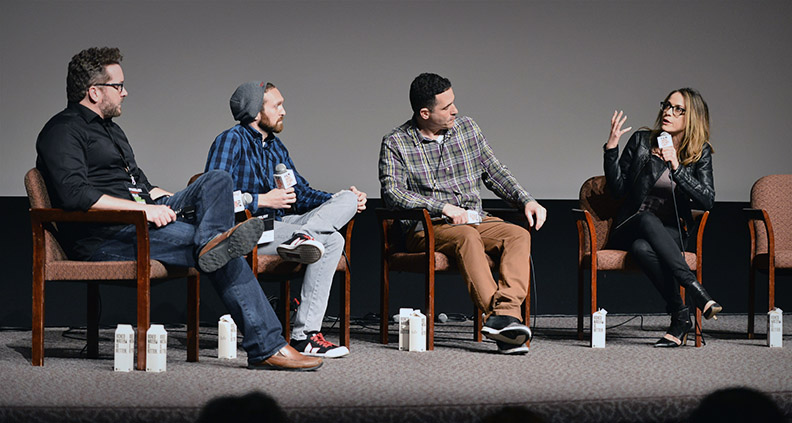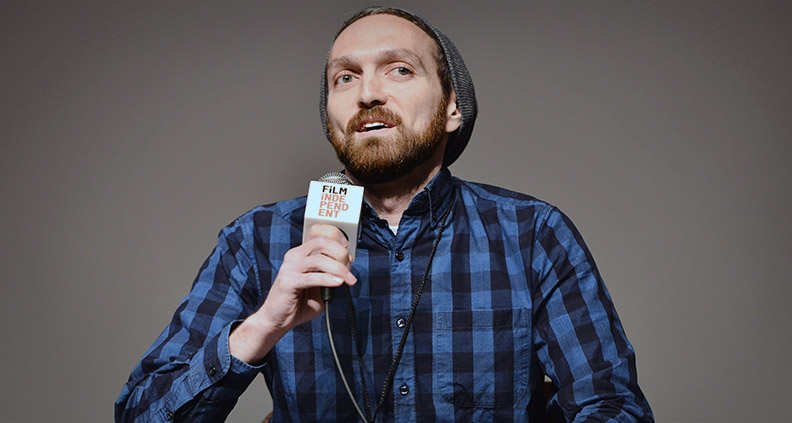Burns was on the forefront of the online video trend, starting with 2003’s Red v. Blue, the longest-running web series to date. He started in the independent film world and his company’s current focus is on scripted content. Rooster Teeth operates out of Austin, Texas with 250 employees, producing a whopping 45 shows. Fine’s company isn’t far behind, with 12 years of operation. Rafi and his brother Benny started making content in high school, trying to get into festivals. Eventually coming to see the internet as a film festival in and of itself, Fine redirected his energies toward making content that engaged directly with an online audience. Starting with feature films broken into clips, the Fines transitioned to short films. “We realized it was okay to make short form [content],” he said. “It didn’t make us lesser filmmakers.” The brothers’ company has added TV to their distribution outlets and employs 55 people. Mendeloff’s Wisecrack is two years old, having blossomed out of Thug Notes, the company’s flagship series, each episode of which features an unexpected host talking about an unexpected topic (like a gangster explaining great literature). The series is 100 episodes in, creating momentum for the company’s other content. “There’s nothing like creating content and working consistently on projects to get creative juices flowing,” Mendeloff summarizes. “And the nature of that breeds more camaraderie, more collaboration, more consistency.” Isn’t the Market Totally Saturated? Everyone agrees it’s an extremely noisy environment online: 400 hours uploading to YouTube every minute, according to Burns. That’s a lot of hours. People can watch anything, he says, but they can’t watch everything. Fine reacted to filmmakers dragging their feet about adding their voices to the noise. “Yeah, it’s getting worse—get off your ass and do it already.” But he doesn’t think making online content is that different from traditional media, since good content is the same no matter the format. So—how do you cut through? Some tips from the panel:
Get in there and start learning. Fine recommends observing what content lends itself to share-ability—tapping into pop culture and using bigger draws to create an audience for your less obvious hits. Compare the platforms. Mendeloff points out YouTube isn’t always ideal. “If you’re not already a big YouTube viewer, take some time to look at what’s happening there. We saw opportunity in the humanities… specifically literature.” There’s also Facebook Live, Vine, SnapChat—make an ongoing exercise of observing what works on various platforms. Be consistent. Burns encourages regular content so viewers know to come back. “Our content is a two-way conversation,” says Burns. As opposed to traditional TV, where they put a hashtag on the screen and it’s supposed to generate a groundswell, Fine suggests involving fans in the actual episodes, citing his show React as an example that utilized direct audience participation.
But how do you make money?
Pre-roll ads: allowing YouTube to show a paid video before your content. Home video: selling content through VOD options or physical media. Live events: conferences to connect fans and offer exclusive experiences. Subscriptions: creating a membership around your fanbase. Merch: stuff for fans to buy!
“The first dollar Rooster Teeth ever made was on t-shirts,” Burns observed. “That was the currency of the internet at the time. When we started there were no pre-roll ads, because there was no YouTube!” Fine remembers that initially his company was against advertising, seeing it as selling out and being uncool. But in the interest of building a business, that changed. “Burnie is really a guiding light in a lot of ways.” The way is lit for building out multiple revenue sources. “A lot of things being seen as very progressive models in the web world are actually pillars of the traditional media world.” Burns specifies windowing as an example. “We borrowed that from the old world, where we would run content on our site first for our subscribers, and then we would put it on YouTube.” For some shows, it took a year to make it to YouTube. Is it worthwhile to do this? With all its foibles and unpredictability, the consistency that comes out of web production is still a huge plus in Burns’ eyes. “In the film world, every project felt like starting a new company.” Rather than putting together a new crew for every production, the habit of working together and building a brand is now innate. Fine commends the sheer volume of ambitious people finding success from their bedrooms and basements. “You [independent filmmakers] have such a leg up,” as understanding filmmaking is part of the learning curve to creating successful content. Whether you leverage your online following to crowd-fund a film (which Burns did, raising $2.5 million from 25,000 people) or to fine-tune a concept (like Wisecrack’s Earthling Cinema, which got off to a bumpy start but became their second most popular show) the web is an entrepreneur’s playground. “It’s a really good time to be a content creator right now,” says Burns. The creators agree that churning out material prepares you to be wildly successful and to fail—and that both events are equally paralyzing. Mendeloff adds, “You don’t have time to lick your wounds, because another show goes out Saturday.”
The 2016 Film Independent Forum happened from October 21-23 at the Directors Guild of America in Los Angeles. Not a Member of Film Independent yet? Become one today. The 2016 Film Independent Forum is supported by Premier Sponsors Directors Guild of America, Loyola Marymount University School of Film and Television and SAGindie, with Principal Sponsors Brandwood Global, Montana Film Office, and The Virginia Film Office.

